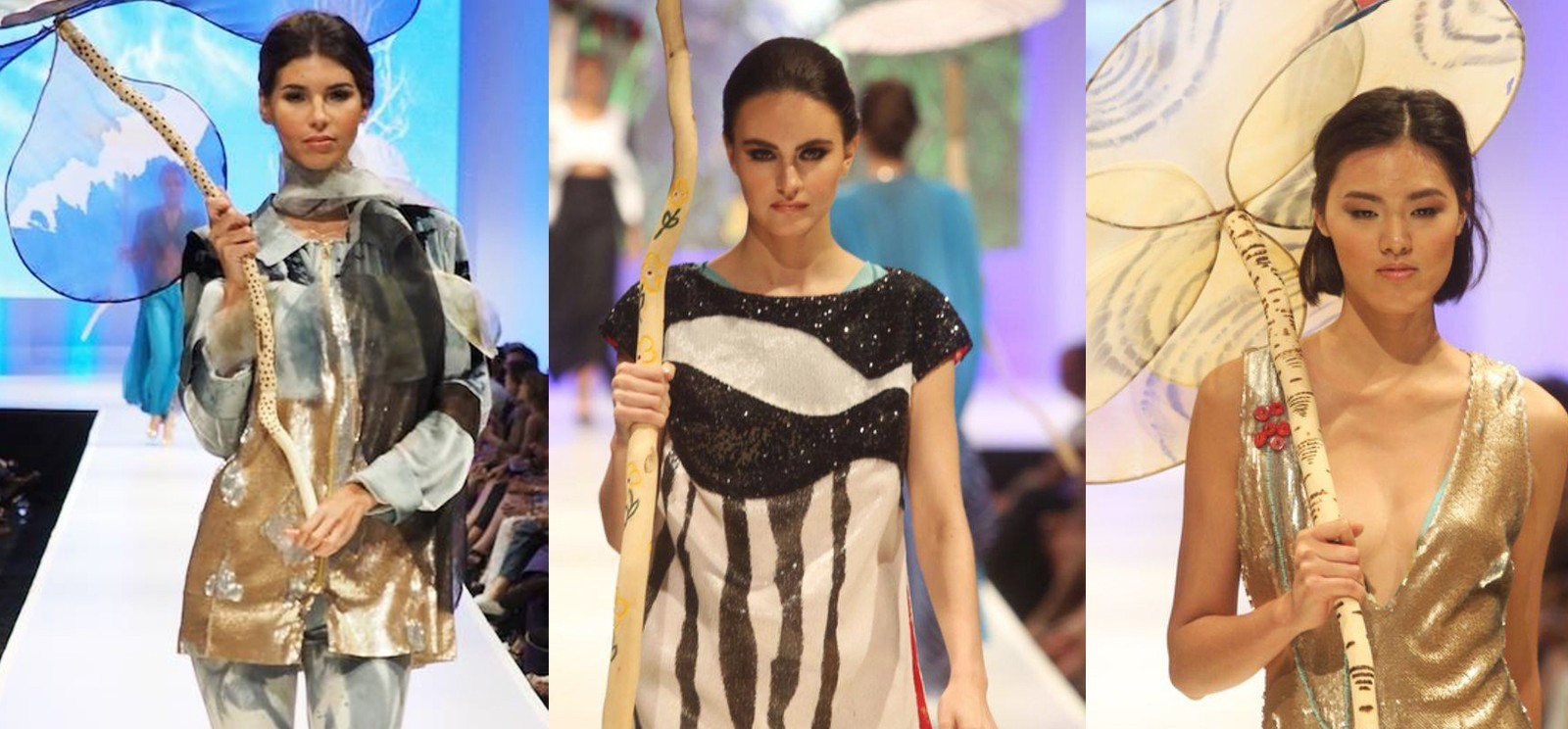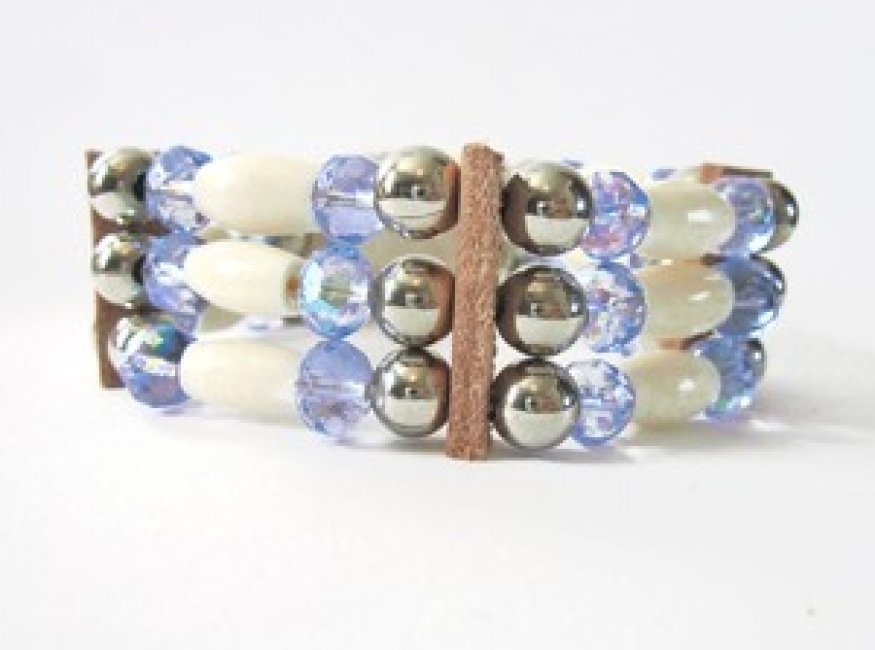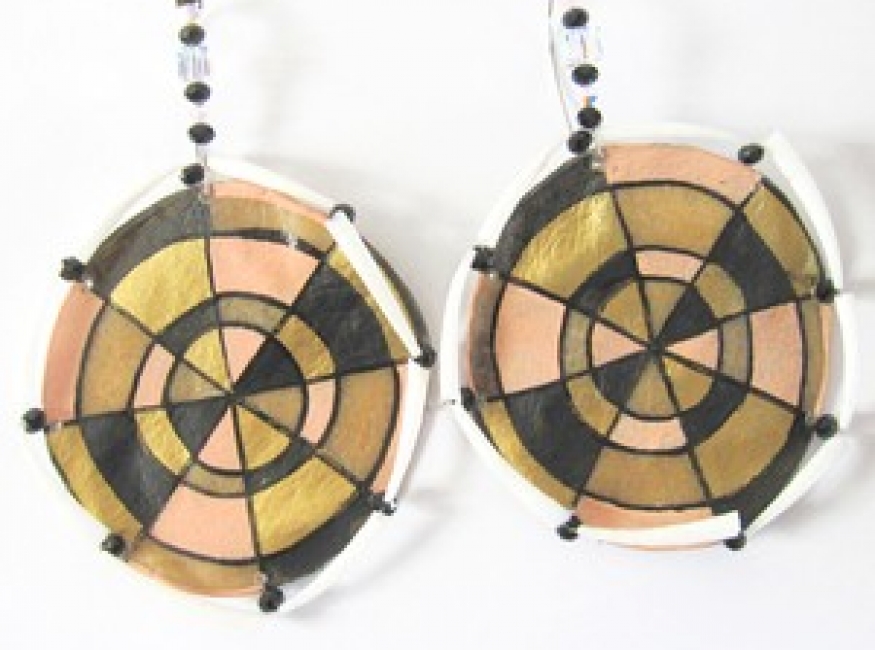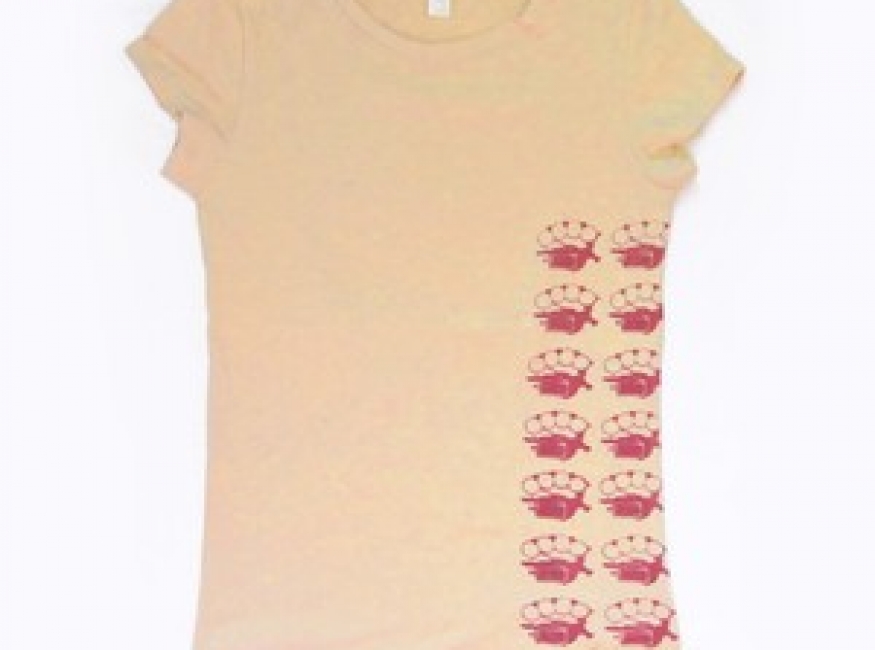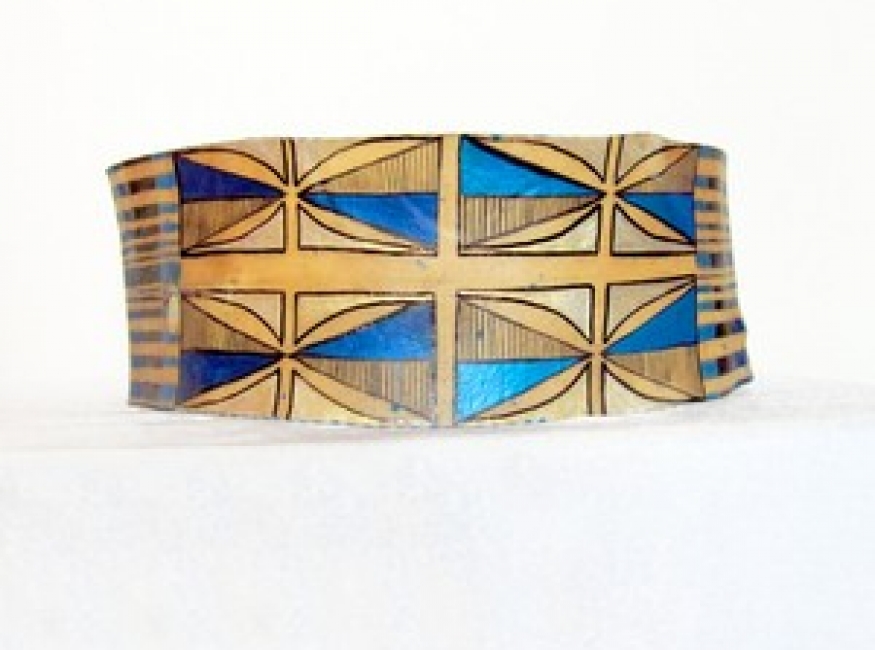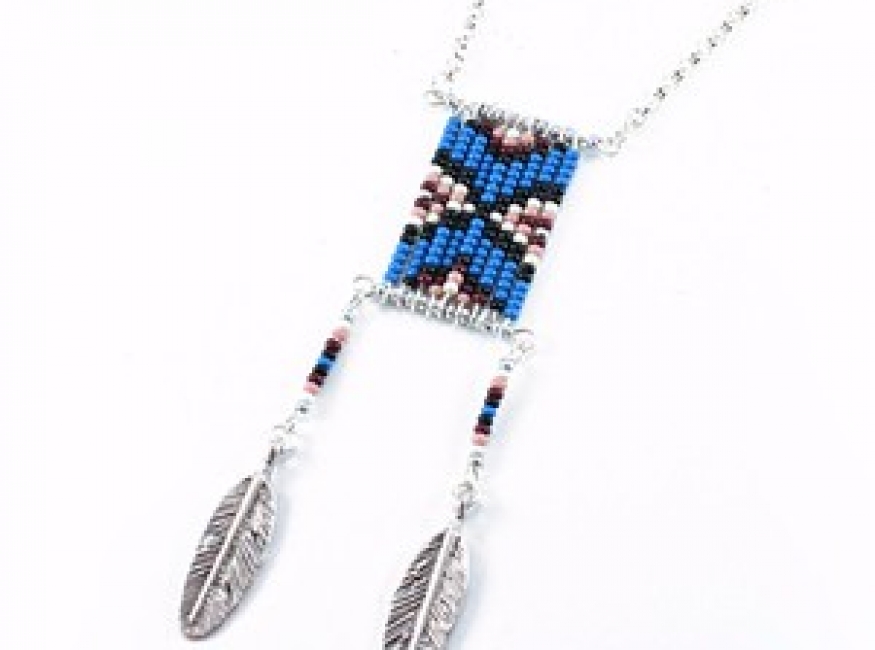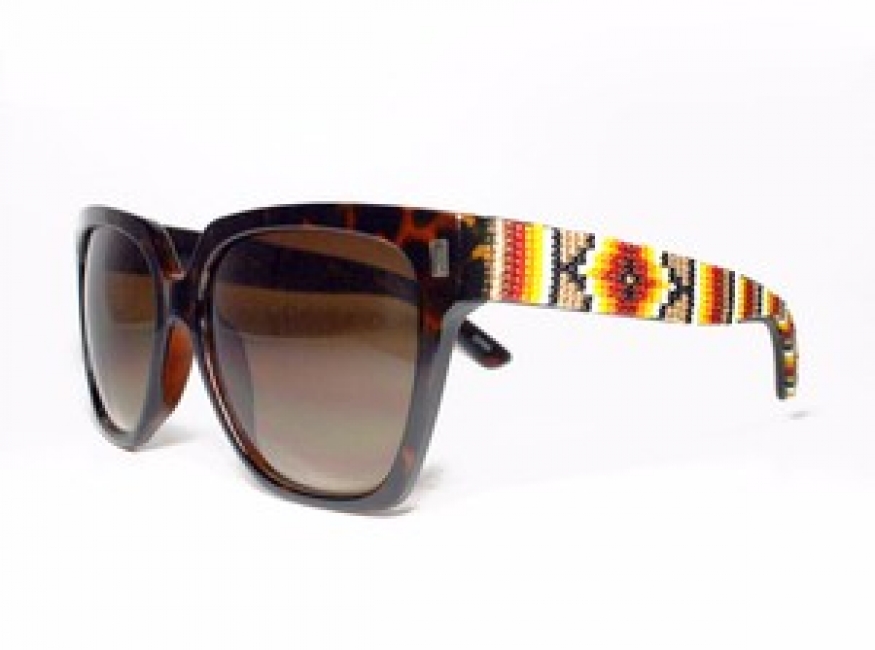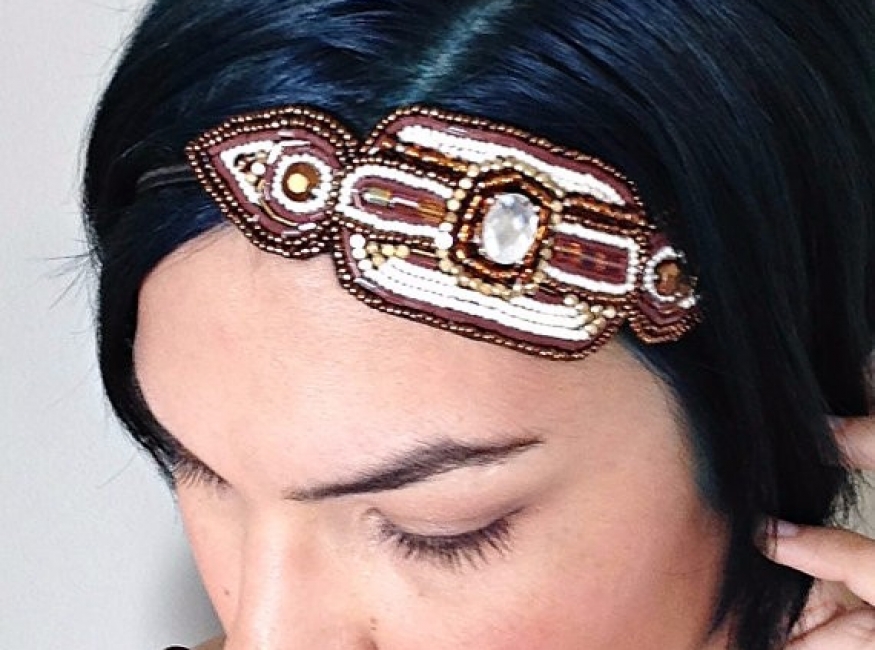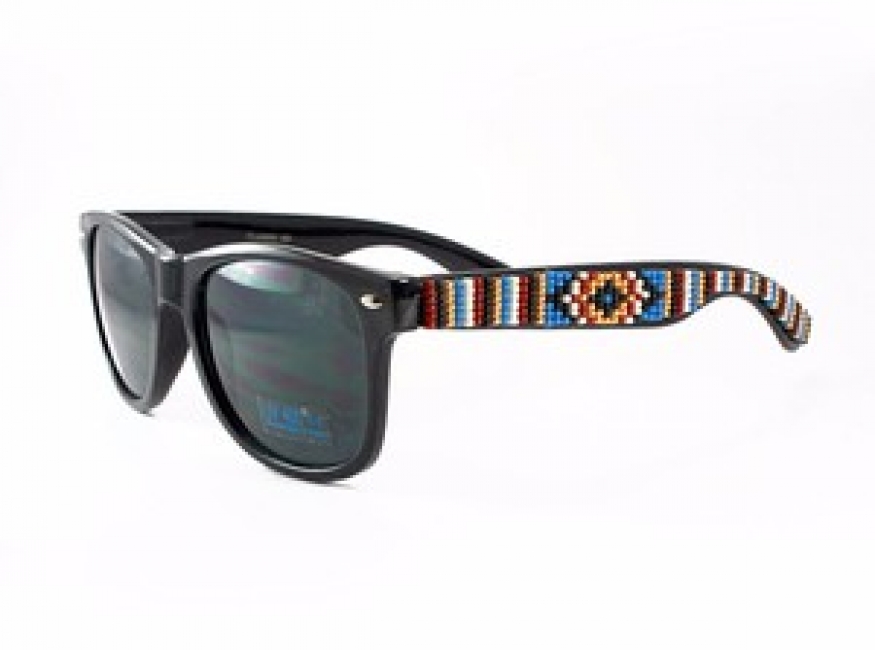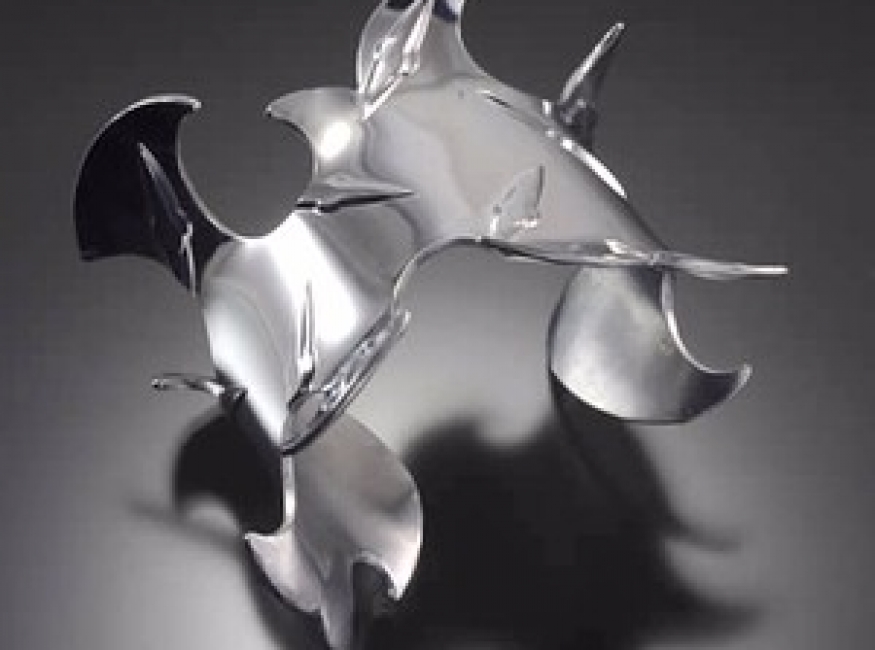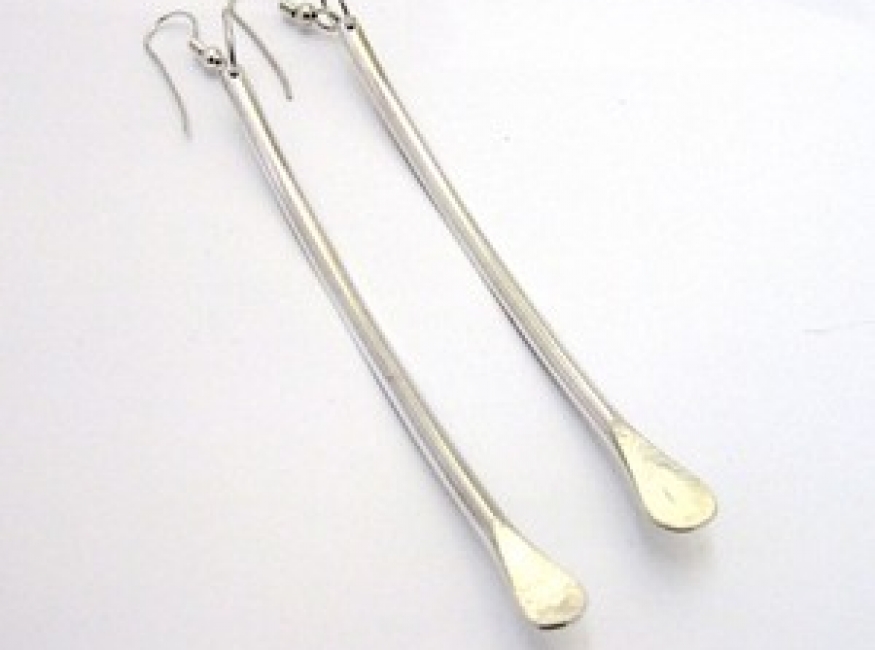Jessica Metcalfe paces between her office and inventory room. They’re conveniently located next to each other on the second floor of her North Dakota home. She lives in a tiny town — population 29 — right next to her tribe community, Turtle Mountain Chippewa. But from her office, Metcalfe reaches thousands each day. “I can be based out of my community in a tiny town and still have a global presence,” she says. This presence is Beyond Buckskin — one of the few spaces for Native American fashion on the Internet.
What started as a fashion blog in 2009 expanded into an online boutique in 2012, one that spotlights more than 40 Native American designers. The boutique grew out of frustration: In 2012, Urban Outfitters had labeled more than 20 items as “Navajo” — but when it comes to clothing, the Navajo name is trademarked. And the Navajo people had nothing to do with these pieces. It prompted Metcalfe to create a space where, instead, Native people would have everything to do with the designs. Since then, Beyond Buckskin has been dedicated to promoting cultural appreciation through fashion. And eventually, Metcalfe wants to see Native designers at the likes of New York Fashion Week or in Barneys New York.
It’s all about exposure: Metcalfe aims to elevate designers by offering them a space to be seen. She photographs designers’ items, sells them on the boutique, and keeps a small part of the profit. She also helps with marketing and promotes the designers on social media. “We do whatever we can do to help artists grow their business,” she says.
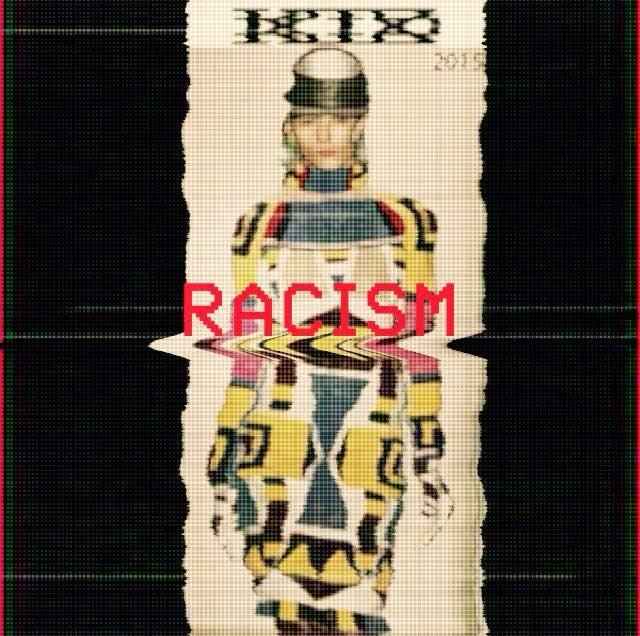
But it’s about more than sales — it’s about education. When Metcalfe isn’t correcting underrepresentation in the fashion world, she’s fighting misrepresentation. She describes KTZ’s latest collection as a “racist rip off” in one of her recent blog posts. In the past, she’s called out Paul Frank and Urban Outfitters for similar offenses. “Instead of carrying on the mis-education and perpetuating the stereotypes,” Metcalfe says, “we want to educate through fashion.”
Wear it
With Metcalfe, it’s hard to know what came first — the art or the activism. She always did art here and there, but she admits the starving-artist route wasn’t her path. In college, she switched her major from art to art history. “That way I could still hang out with the artists without the expenses that go along with being an artist,” she says. Instead, Metcalfe earned a Ph.D. in American Indian Studies, and wrote her dissertation on Native designers of high fashion. Her work gave a voice to her people, but only her professor heard it. She decided to give that voice a bigger platform with a blog.
Now, Beyond Buckskin gets between 1,000 and 2,000 hits a day on the boutique alone. For Beyond Buckskin designers, fashion is the medium through which their voice is heard.
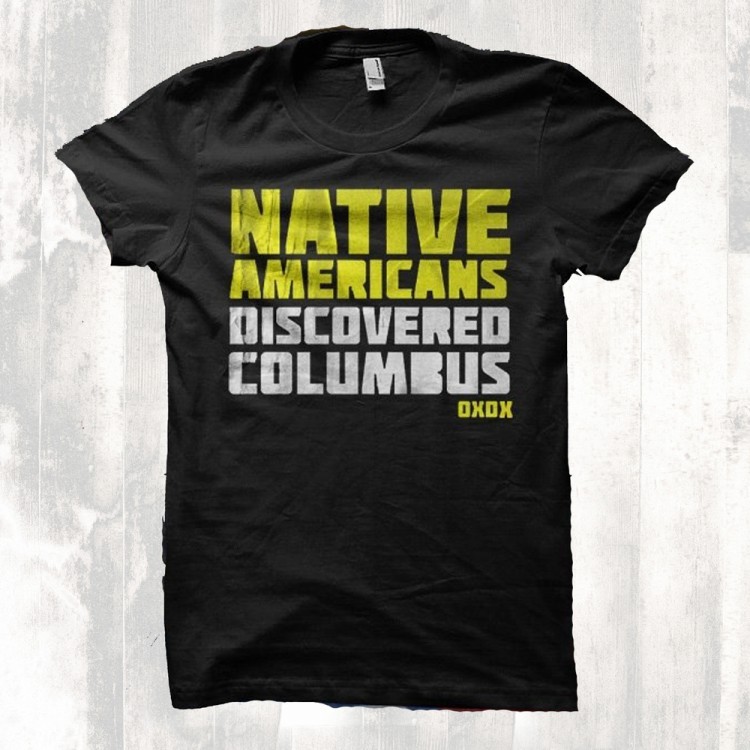
The designs in themselves combat ignorance. The boutique’s best-seller packs a political punch — a graphic tee by Jared Yazzie, Navajo. Across the front, it says, “Native Americans discovered Columbus.”
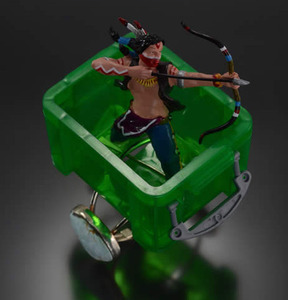
David Gaussoin’s one-of-a-kind bracelet, Get Back in Your Box, says a lot without the help of text. Gaussoin says it protests the idea that Native jewelry designers can only use silver or turquoise. That’s not who he is as a designer. “Using a stereotypical piece of plastic, I’m telling everybody I won’t be put back into a box,” Gaussoin says. “I won’t be dictated about what I can and can’t make. To me, that’s censorship.”
But Metcalfe says you don’t have to be Native to wear Yazzie’s or Gaussoin’s items — no matter how political. “These designers translate their cultural, artistic legacy for a broader audience,” Metcalfe says. Because they know the difference between what is sacred and what to sell.
Sun Rose Iron Shell loves when non-Natives wear her designs. Her reasoning is based in tradition. “We used to absorb outsiders into the tribe. People forget that,” she says. “No matter what color you are, in ceremony, everything is dark and they don’t see by skin color. We’re all human beings.”
Wear it Right
But that doesn’t mean non-indigenous people can wear Native-inspired designs willy-nilly. Some things are sacred — and that’s what mainstream fashion often forgets. “These [Native] designers have strong connections to their communities, and they are well aware what symbols shouldn’t be for sale to outsiders,” Metcalfe says. The headdress is one of them. Only the most powerful in the tribes wear these headpieces — the chiefs and the leaders and the warriors. Metcalfe says they shouldn’t be sold and worn by outsiders, “especially people who are going to wear them to festivals and have them around alcohol. It’s very disturbing and disrespectful.”
Many high-end designers like Ralph Lauren and Karl Lagerfeld have misused the Native American image to sell clothes. While most don’t correct those mistakes, Paul Frank did. In 2012, his brand introduced its tribal-inspired T-shirt line. It showcased his famous monkey in a headdress or tangled in a dream catcher on basic tees. At the collection’s launch “powwow,” people dressed as “Native Americans” were photographed pretending to scalp each other with tomahawks. Metcalfe called out the brand on the blog. And Paul Frank did more than apologize. He decided to collaborate with four indigenous artists on a limited edition line for Fall 2013, including with one designer from Beyond Buckskin. Elie Dekel, president of Saban Brands (which works with Paul Frank), told Metcalfe, “We need that girl who makes the sunglasses.”
Beyond Buckskin’s sunglasses girl is Candace Halcro. “I didn’t believe it when I saw an email from Paul Frank,” Halcro says. “That was the first time a company had actually worked with indigenous artists to create clothing and accessories. It was really amazing to be a part of that.” Since her collab with Paul Frank, Halcro’s designs have been featured in publications such as People StyleWatch. And she can barely keep up with her orders.
In the last few years, other big names have worked with the tribal trend, too, from Dior’s “tribal” earrings to department stores’ printed tanks. And whether it’s at Target or Pac Sun, mainstream fashion continues to take inspiration from Native culture. Iron Shell says she isn’t offended by the overuse of tribal prints and moccasins. She sees it as opportunity. “The world is looking towards indigenous people in all the trends you see,” Iron Shell says. “I’m like, ‘Yes! Come learn the truth!’”
Metcalfe agrees. She says the tribal print, graphics, and jewelry mass-produced by the likes of Forever 21 work as a foot in the door for Beyond Buckskin. “Because people like the feel of it and they’re interested we have the opportunity to say, ‘Here’s the real stuff,’” Metcalfe says.
In the plastic world of fast fashion, “the real stuff” is hard to come by. Metcalfe encourages shoppers to start thinking about purchases as investments — and not only in the shelf life of an item. She says when you shop companies like Beyond Buckskin, “you’re investing in diversity.”
Today, users can invest in diversity through the blog and boutique. But in the future, Metcalfe hopes to open a non-profit offshoot of the business. The offshoot will focus on workshops where existing designers teach emerging designers the business. To break into the fashion world, “you have to have a lot of money and a lot of connections,” Metcalfe says. “We don’t have a lot of money. So we work together.” These programs will help propel the next decade’s up-and-coming designers so that Native American fashion is more than a trend. “We want to be sure to create a path for them,” Metcalfe says, “so they can make it to New York Fashion Week, or London, or Paris — wherever they want to go.”
Meet the Collective
Beyond Buckskin aims to advocate for Native designers and community leaders.
“A lot of designers got excited about the idea of having this space. It was something that they needed as well,” Metcalfe says.
Here’s how the collective helps designers such as Sun Rose Iron Shell, Candace Halcro, and David Gaussoin. And how, in turn, they help combat misappropriation and underrepresentation, both at the tribal level and in the Native American community as a whole.

